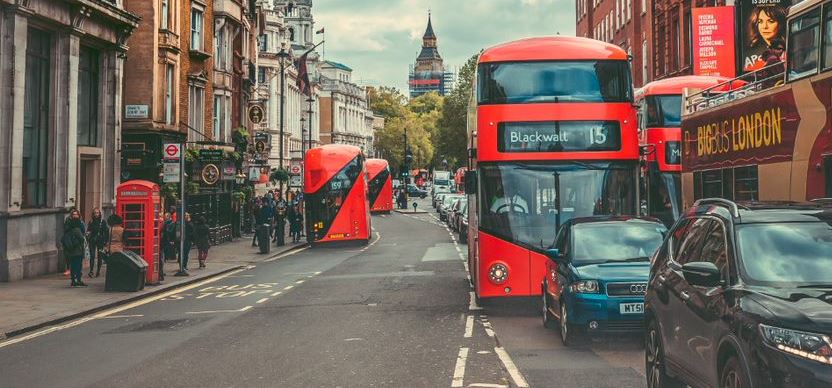The Bus Safety Standard (BSS) is focussed on vehicle design and safety system performance and their contribution to the Mayor of London’s Transport Strategy. This sets a target to achieve zero road collision deaths involving buses in London by 2030.
All TfL buses conform to regulatory requirements. TfL already uses a more demanding specification when contracting services and this requires higher standards in areas including environmental and noise emissions, accessibility, construction, operational requirements, and more. Many safety aspects are covered in the specification such as fire suppression systems, door and fittings safety, handrails, day time running lights, and others. However, the new BSS goes further with a range of additional requirements, developed by TRL and their partners and peer-reviewed by independent safety experts.
Advanced Emergency Braking (AEB) is also called Automated or Autonomous Emergency Braking, but these names generally refer to the same system. It can be described as a Driver Assist system, designed to help the driver to avoid or mitigate the severity of incidents. An AEB system uses forward looking sensors such as Lidar, Radar, Camera, or fusions of data from more than one sensor, to identify a risk of an imminent collision. It will typically first warn the driver of the risk and, if the driver does not act, then it will apply braking automatically to avoid the collision or to reduce the collision speed and therefore the potential for injury. It will warn and intervene in an emergency in the last few seconds before an impact and provides braking much later than during normal driving. Systems will be available that respond in front-to-rear collisions with other vehicles and frontal collisions with pedestrians crossing the road, or cyclists travelling more slowly ahead of the bus.AEB standards have previously been developed for HGVs and cars, but buses pose a unique additional challenge because of the multiple passengers that are seated and unbelted, or who might be standing. AEB has been proven effective in other vehicle types, in both front-to-rear vehicle collisions and pedestrian collisions. Analysis strongly suggests it will provide considerable benefit when fitted to buses too. However, on very rare occasions, an AEB system can activate when it did not need to (a false positive) because it incorrectly identified a collision threat. For all vehicle types this creates a risk of unnecessary collisions with following vehicles, but for a bus, each false activation also carries a risk that it could cause passenger injury.

